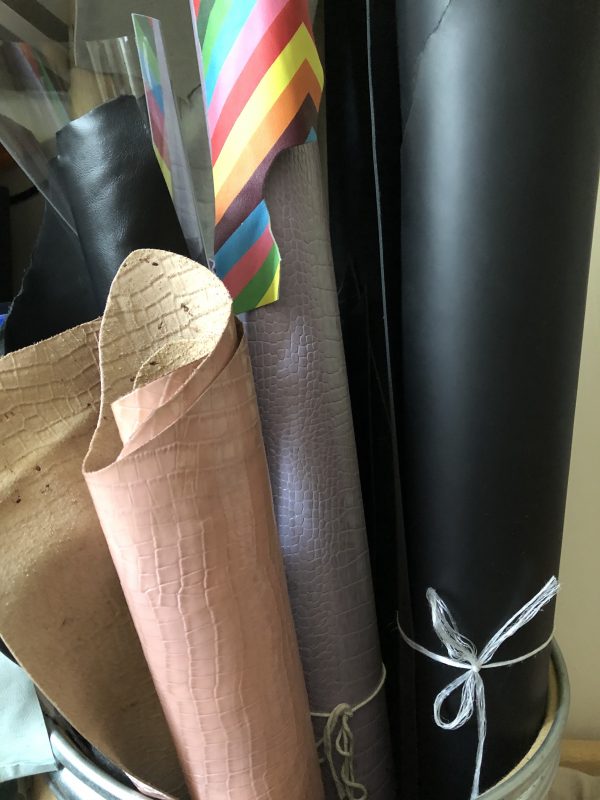Blog
Why Choose Leather For Harnesses?
Why Choose Leather?
Leather has been around for a long, long time. It’s been used as a fabric before fashion was even a thing. It has served many purposes through multiple generations, and has proven to withstand the test of time. Despite leather’s extensive history, issues and criticisms against its usage has only come to light in the late 20th and early 21st century.
Animal rights activists take offense at the use of natural leather in products. Amongst other complaints, they argue that the raw materials and the processes involved are inhumane and environmentally unfriendly, but is that always true? Or is it a generalization of a very complex field?
Is Faux Leather Better?
Since they frown upon natural leather, an alternative offered by animal rights activists is “faux leather”, sometimes known as “vegan leather” or “pleather”. An animal-friendly alternative does seem appealing, but things are more complicated than that. While it is true that vegan leather does not use animal products, and therefore does no direct harm to animals, it is not necessarily a more environmentally friendly product. The most commonly used materials in the creation of pleather, polyvinyl chloride (PVC) and polyurethane (PU), are synthetic. Although more eco-friendly pleather can be found, only a handful of vegan leathers are actually made from natural, harmless materials. Pleather is indeed an animal-friendly swap for authentic leather, but the process of making faux leather is not beneficial at all to the environment at large. Simply manufacturing PVC-based products creates hazardous wastes that can lead to developmental problems. Not to mention that pleather is not biodegradable, and also rarely durable. When the fake leather eventually wears itself out, it will simply be discarded, left to not biodegrade as another addition to the already problematic textile waste.
Is Leather Sustainable?
Now, to address the valid concerns for animals involved in leather production. The most widely used leather comes from animal hides. Those animals are typically ones that are already raised for their meat and other by-products; cattle, sheep, goat, and even pigs. After these animals are slaughtered, their meat will obviously be taken and sold for consumption, but what happens to all the discard, specifically to an organ as large as the skin? Why throw away a perfectly usable raw material, when it can be turned into something that is useful and long lasting. As long as the animals involved are kept in good, humane conditions, the impacts of taking leather from the animal source is very minimal at most.
Leather needs to be treated before becoming useable. This treatment is known as “tanning”. A widely used process of tanning involves chrome, and it is a generally frowned upon method because of its harmful effects on the environment. Improper disposal of the waste products can lead to polluted waters, among other problems. With the move towards sustainability, many companies are finally breaking away from chrome and metal tanning, and opting to use more environmentally friendly alternatives. The fashion industry, especially the bigger brands, are either already in the process of rejecting this method, or have already turned their backs on it. The Kering group who owns big luxury brands like Balenciaga, Gucci and Yves Saint Laurent already introduced a metal-free way of production.

Another way of treating leather is through vegetable tanning. This method is one that is the most environmentally friendly, as it does not involve any harmful or harsh chemicals. An added bonus to vegetable tanning is it allows the treated leather to develop a beautiful patina that becomes darker over time, as opposed to the aged look that some differently/poorly-treated leather eventually take on. This style is typically used by artisans, which does raise the price and value. No vegetable tanned leather will look the same, so buyers can be reassured that their purchase is uniquely theirs. Brand names like Berdine, Silent Goods and ZAMT use this method.
The Diversity of Leather
After treatment, leather becomes virtually invincible. A testament to its durability is the fact that it’s used in police gloves, because it adds a layer of protection against needles and other sharp objects when patting down a suspect. A lot of leather products can last through generations; parents can pass down an old leather jacket to their kids, and it’ll still look as good as the day it was bought, if not better. Leather is also a very breathable fabric, so looking cool doesn’t have to come with suffering through the heat. Another thing that makes this fabric great is that it’s waterproof; it makes perfect sense to use them in shoemaking, and even in bag crafting.
The uses of leather is almost infinite, it totally depends on one’s imagination and creativity. Traditionally, leather can be used for jackets, car interiors, motor cycle seats, and furniture. Because of its flexible nature, leather can be easily manipulated into virtually any shape desired. Having leather pieces was already a trend back in the day, but the trend mellowed for a while, until it made its most recent comeback today.

Most people go for an understated edgy vibe with a simple leather cuff, and others go for something a little louder, like a black leather harness over their day clothes. Using a harness as part of an outfit in public used to be more controversial, as it can be viewed as a sexual object, but seeing it used as a fashion statement by international artists definitely opened up the horizon. Leather harnesses as a trendy accessory still has a long way to go, and simply adding a bold black leather harness to any getup gives it that much more style.
Another one of the more recent fashion forward trends is using leather material for underwear and lingerie. Some people noticed that there was a niche to be filled, and so genuine leather bras entered the market. The concept was approached warily at first, but consumers seem to love it because of the softness, plus the breathability of leather definitely adds to the appeal. Many have used it as more than just an underwear though. Leather bras can easily be a statement piece in an outfit. Plenty of people have tried styling leather bras in tasteful, fashionable ways, and it definitely worked for them.
All in all, leather and its synthetic alternatives have their ups and down. It would really depend on what priorities you have, whether your sympathy is with animals or with the environment in general. Fashion with real leather and pleather is comparable, but from a practical perspective, natural leather is still the way to go. It’s durability alone is enough of an incentive, because in the long run, less waste will be introduced to the environment.
